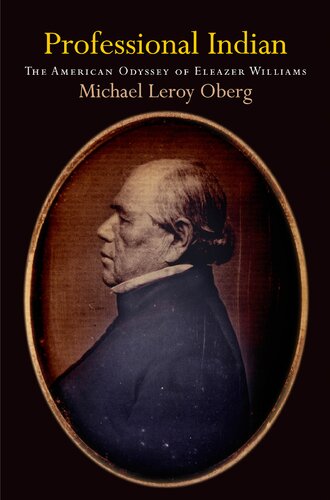

Most ebook files are in PDF format, so you can easily read them using various software such as Foxit Reader or directly on the Google Chrome browser.
Some ebook files are released by publishers in other formats such as .awz, .mobi, .epub, .fb2, etc. You may need to install specific software to read these formats on mobile/PC, such as Calibre.
Please read the tutorial at this link: https://ebookbell.com/faq
We offer FREE conversion to the popular formats you request; however, this may take some time. Therefore, right after payment, please email us, and we will try to provide the service as quickly as possible.
For some exceptional file formats or broken links (if any), please refrain from opening any disputes. Instead, email us first, and we will try to assist within a maximum of 6 hours.
EbookBell Team

4.7
56 reviewsBorn in 1788, Eleazer Williams was raised in the Catholic Iroquois settlement of Kahnawake along the St. Lawrence River. According to some sources, he was the descendant of a Puritan minister whose daughter was taken by French and Mohawk raiders; in other tales he was the Lost Dauphin, second son to Louis XVI of France. Williams achieved regional renown as a missionary to the Oneida Indians in central New York; he was also instrumental in their removal, allying with white federal officials and the Ogden Land Company to persuade Oneidas to relocate to Wisconsin. Williams accompanied them himself, making plans to minister to the transplanted Oneidas, but he left the community and his young family for long stretches of time. A fabulist and sometime confidence man, Eleazer Williams is notoriously difficult to comprehend: his own record is complicated with stories he created for different audiences. But for author Michael Leroy Oberg, he is an icon of the self-fashioning and protean identity practiced by native peoples who lived or worked close to the centers of Anglo-American power.
Professional Indian follows Eleazer Williams on this odyssey across the early American republic and through the shifting spheres of the Iroquois in an era of dispossession. Oberg describes Williams as a "professional Indian," who cultivated many political interests and personas in order to survive during a time of shrinking options for native peoples. He was not alone: as Oberg shows, many Indians became missionaries and settlers and played a vital role in westward expansion. Through the larger-than-life biography of Eleazer Williams, Professional Indian uncovers how Indians fought for place and agency in a world that was rapidly trying to erase them.